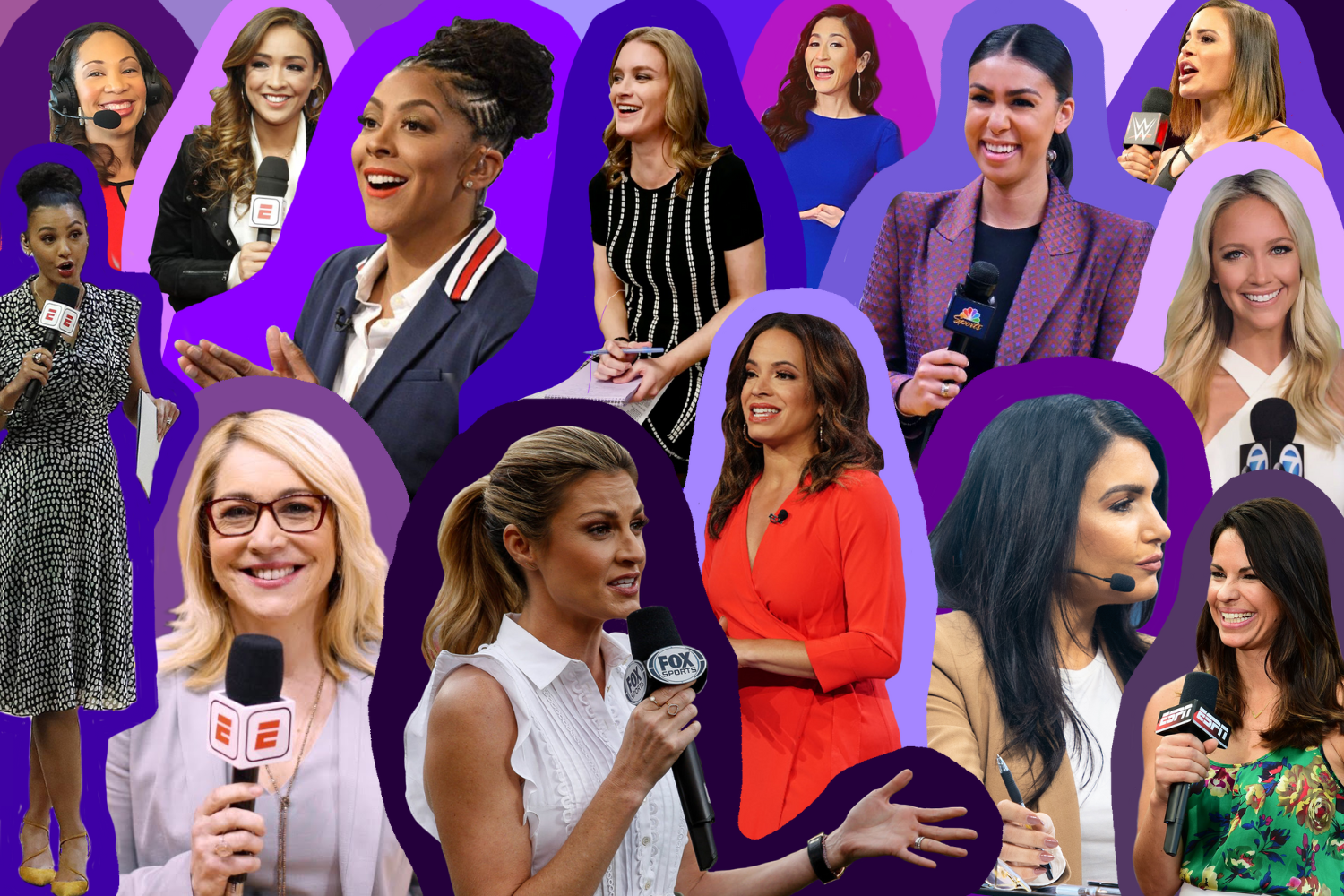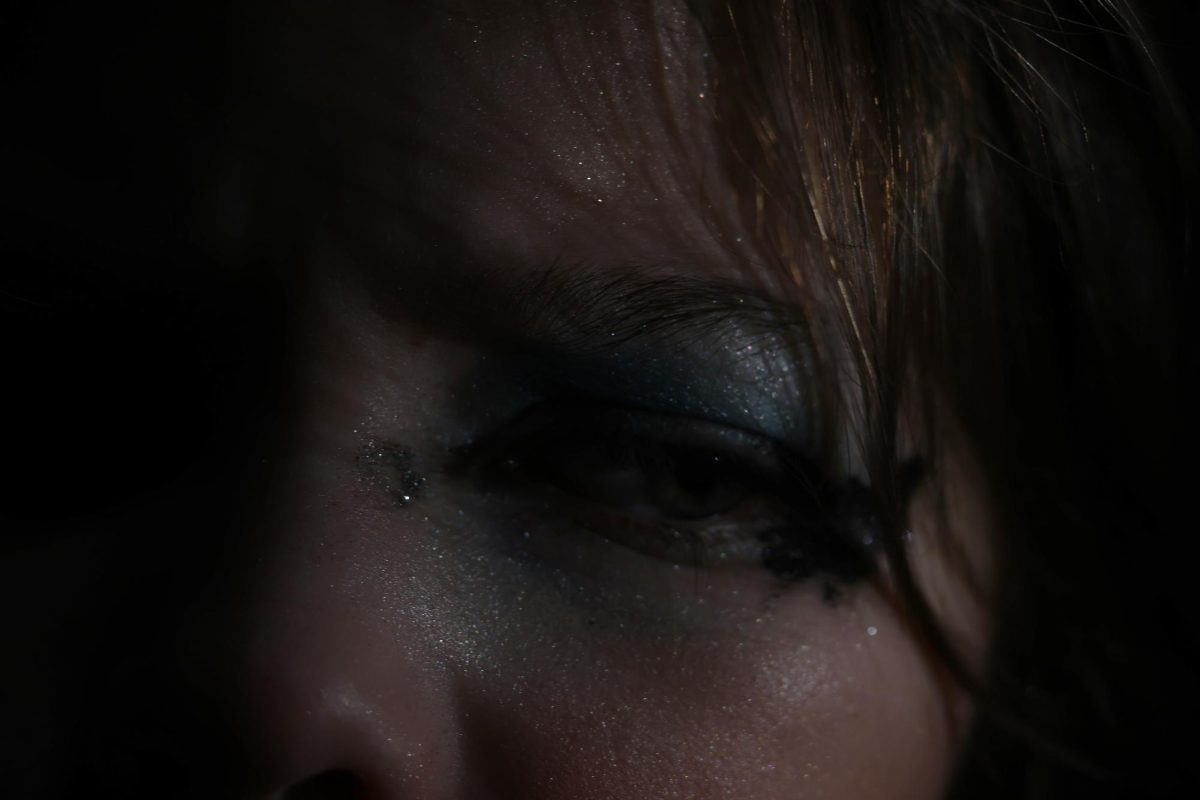For decades, women were always underrated in the sports journalism world, now they’re some of the brightest names in the entire industry.
Sports, a typically male-dominated field, has been on the rise over the years in every single aspect–athletes, coaches, etc. But the part that’s been surging that doesn’t get nearly enough attention is the fact that there’s been a strong, proven increase of female journalists (writing, reporting, analyst, etc). This isn’t just any ordinary fluke that people say it’s “just the luck of the draw”, it’s real growth and people need to realize that these powerful women are no longer confined to a box based on society’s stereotypes and expectations. Through this, there’ve been tons of female sports journalists that’ve been completely changing the game, one story at a time. They’ve paved the way for the next generation and sent bold messages that women can do exactly what the men do when it comes to journalism, and sometimes even better.
Trailblazers That’ve Paved The Way
Ever since the very beginning, female sports journalists were actually earning their coveted press passes, not just having them handed out randomly like a free gift. Every path has a beginning, and these powerful women have been the starting points for this movement that’s going to continue elevating forever. There are so many examples of those that’ve paved the way for sports journalism and impacted millions of lives.
Celebrated as the most highly acclaimed female sportscaster ever, Lesley Visser has been credited with a long list of monumental “firsts”. She was the first woman inducted into the Pro Football Hall of Fame, first to win a Sports Lifetime Achievement Emmy, and the only sportscaster, male or female, to work network broadcasts across the Final Four, NBA Finals, World Series, Super Bowl, Olympics, Triple Crown, and U.S. Open. In addition, she broke a tremendous barrier by carrying the Olympic Torch and becoming the first woman to present the Super Bowl’s Lombardi Trophy. Way more than just a list-breaker, she’s carved a very significant path for aspiring female sports journalists, becoming a beacon of light for them as they navigate their own path up the rankings and into destiny.
“I don’t know if everybody is ready to hear a woman tell them so-and-so is going to run off left tackle. But you know what? They’re going to hear it,” she said as one of her most famous quotes, setting the tone for the rest of the sports world.
Bold, sharp, and never afraid to push the envelope, Christine Brennan was changing the entire industry, not just reporting all the news. In 1981, she became the first female sports reporter for The Miami Herald, and by 1985, the first woman to cover the Washington NFL team serving as a staff writer with the The Washington Post. In 1988, she was the first president of the Association for Women in Sports Media (AWSM), then etched herself as one of its longest-running scholarship programs for young women. Her voice has been the true echo through every Olympic Games dating all the way back to 1984, and she’s earned some of journalism’s most prestigious awards, including the 2020 Red Smith Award.
“For someone like me, as a journalist, I don’t see myself as an advocate for women’s sports. I see myself as an advocate for the coverage of women’s sports,” she said in an interview with Vanity Fair this past July.
When locker rooms and press boxes were off-limits, Jeannie Morris took her reporting straight to the roof. In the 1960s and ’70s, she navigated a tough and stereotyped world that forced her to write under her husband’s name, “Mrs. Johnny Morris,” yet still quite a remarkable career on her own, showing her true colors through resilience and pure grit. In 1975, she became the first woman to report from the Super Bowl, and in one of her boldest moments, she covered an entire Bears game from a press box roof during a full on snowstorm, solely because of the fact that she wasn’t allowed inside. Her tremendous career earned her 11 Emmy Awards and, in 2014, she was honored with the Ring Lardner Award for Excellence in Sports Journalism, becoming the first woman to ever receive it.
Leaders of Today
When you tune into all the main sports channels like ESPN and FOX, you’re bound to see a woman front and center. These aren’t just sideline reporters like a lot of people think they are, they’re storytellers, analysts, and anchors who’ve built the credibility and trust to stand with anyone in the business. They’re the leaders shaping the standard of sports journalism right now.
Holly Rowe has built quite a reputation at ESPN for over 25 years, covering anything and everything from Saturday college football games to March Madness (men’s and women’s) to the WNBA Finals. To add more fuel to this, in 2021, she broke through every possible chain by becoming the first female color commentator in the history of Utah Jazz. It’s perfectly clear that Rowe is one of the all time greats in the industry.
As a sports queen and full on boss, Erin Andrews joined the ESPN crew in 2004, and eventually became the lead NFL sideline reporter for FOX Sports just a decade later. She’s become one of the greatest of all time in this profession and built a one of a kind resume, through her work both inside and outside of the media. She has many high profile events under her belt, like Super Bowls and MLB playoffs for instance, while also simultaneously showing off her external media versatility through crossover events like co-hosting Dancing with the Stars with Tom Bergeron from 2014-2020. Through the power of her high exposure and mature presence on-camera, she’s had the chance to utilize her platform to her full advantage by launching WEAR, her clothing line, and even speaking out about privacy/security issues.
Rebecca Lobo is an absolute baller in the basketball and journalism world. A UConn legend from the 1995 National Champion and undefeated 35-0 team and WNBA pioneer, she’s a key ESPN analyst for college and professional women’s basketball. On the other hand, she’s been an excellent breast cancer advocate ever since her mom lost her battle in 2011, while also co-authoring a book with her and creating a scholarship to support cancer survivors, showing her true colors as someone who cares deeply about her community and those surrounding her.
A two-time WNBA All-Star and Rookie of the Year with the Connecticut Sun, Chiney Ogwumike is very impactful on and off the court. She works across numerous ESPN platforms, including NBA Today and SportsCenter. In August 2020, she made history as the first Black woman to ever host a national daily sports talk radio show, when she hosted “Chiney and Goliath Jr” on ESPN Radio. To add, she serves as the first female ambassador for the Basketball Africa League, blending her media work with her own roots and international advocacy for the overall sport.
“For me as a broadcaster, I never thought I would be in broadcasting,” she told Essence in an interview this past February. “But the fact that there are more opportunities for women, for women that look like me, who have the same aspirations like me, and to be on the early end of it, knowing how hard it was it just makes it more fulfilling to be able to be that role model to the next generation and to see the transformation happen in real time.”
Katie George, who is a former 2014 All-ACC + All American volleyball player at Louisville and Miss Kentucky USA (both in 2015), has been known for her strong athletic background with her pure class and on-camera poise into a truly remarkable career with ESPN and ACC Network, becoming the “calm in the storm”. Ever since she joined in 2019, she’s covered football, volleyball, and basketball with on-point analysis and a fresh energy that connects really well with fans all throughout the country. On August 12, ESPN PR announced that she was added to Monday Night Football games as a sideline reporter (select games include Week 2, 4, 6, 7 & 18).
Next Generation
These rising voices are rising from the ashes and rewriting the sports journalism playbook, sending a loud message that the future for this profession is bright and unstoppable.
Michella Chester is a strong journalist serving as reporter and host for NCAA.com, NCAA Digital, and March Madness coverage at Turner Sports. She shows her huge package of versatility by going it all: writing, shooting, and editing exclusive video content for NCAA platforms, delivering on-camera interviews with athletes and coaches, and bringing live championship events to life, such as both the Baseball and Softball College World Series. She also covers tons of college volleyball games, bringing in a wide variety of coverage opportunities. With a journalism degree and sport-management background from the University of Georgia, she’s exploded onto the scene as a name that people should recognize more often.
As a volleyball analyst and reporter for ESPN, Big Ten Network; and FOX Sports, Emily Ehman brings both experience and lots of passion to her role. A former Northwestern volleyball standout, she has covered many milestone events like Nebraska’s world record-setting match with 92,003 fans in attendance, several NCAA Tournament regionals, and the Women’s College World Series. She’s also expanded her reach through digital media, freelancing for professional franchises like the Pro Volleyball Federation (specifically the Indy Ignite team) and Athletes Unlimited.
“No one is going to give me anything, so I’m going to have to start making my own opportunities,” she said in an interview with Game Plan.
Since joining in 2018, former University of Tennessee player Andraya Carter has become the only analyst covering NBA, WNBA, men’s, and women’s college basketball, and was the first woman to serve as a full-time desk analyst on Men’s College GameDay. Also, she’s been honored with awards like the 2022 National Sports Media Association (NSMA) Best Young Reporter and 2023 Dawn Staley Excellence in Broadcasting. Her versatility across multiple platforms, analyst on studio shows, sideline reporter, and 2023 recipient of an Emmy nomination under the “Emerging On-Air Talent”, makes one of the most dynamic young voices in today’s sports media world.
“I’m inspired by the women that have come before me, and I very much think I can take up spaces and bring value being in multiple lanes,” she told The U.S. Sun in a 2024 interview with them.
Barriers Still Remaining
Despite tons of amazing and monumental strides being made in this profession, there still lies several underlying problems that need to be addressed more often.
With representation, even though there’s a great increase in women’s sports interest, media coverage remains low to the point where it’s not proportional. According to a study published by the Atlantic Journal of Communication, it stated that out of 2,242 sports-related articles, 94.9% were written by male journalists, while only 5.1% were written by female journalists. This imbalance not only affects society’s perception of all these female journalists that are working just as hard, if not harder, as men, but also limits opportunities for them to report on high-profile events, and worst case scenarios can potentially hold them back from living out their big dreams that are considered once-in-a-lifetime.
Also, women in sports journalism often face significant pay gaps compared to men, even when performing the same exact roles side-by-side. Some of those roles may pay a decent amount, but won’t be able to sustain someone’s whole entire life depending on how much they profit off of it. Closing this gap is the true key for recognizing the power and skill that women have.
“Situations that disproportionately affect women shouldn’t be discussed in the media without input from women on any level,” Julie DiCaro with 670 The Score said in a 2016 interview with ESPN.
Every female that’s played a sport at some point in her life has heard or been told the saying “You play like a girl”. These journalists constantly find themselves in stereotypes that completely question their knowledge, credibility, or suitability for various reporting roles that are male dominant. Ordinary people in the outside world may not realize it, but these can cause a decline in professional confidence and limit career advancement, forcing them to consistently prove themselves time and time again in ways their male colleagues won’t even have to worry about at all.
Why Does Representation Matter?
Though there are lots of obstacles in the way sometimes, it’s essential to have the right females representing women in sports journalism all around the world.
But the road ahead doesn’t primarily focus on praising individual achievements, it involves impactful adjustments that are able to send messages to the entire community. Once this happens, organizations can start promoting equity more often, shutting down all bias, and providing mentorship + leadership opportunities for women. One thing that audiences may not realize is they even play a big role, even if that means staring at the TV screen, by simply supporting female journalists and engaging with all women’s sports coverage.
“There are not many black female women on TV, period,” Ogwumike said in an interview with The Guardian NIgeria. “When I was first given the opportunity to first go on TV, I was scared. But I know that there are tons of young girls that aspire to be broadcasters, and I just want to make sure I make them proud.”
For aspiring female sports journalists that look up to the current ones, the field is completely open. From past to present, the baton has been handed over and now is the time for the new generation to step up to the plate and be ready to make their mark known.
Looking Forward
The continued growth of women in sports journalism is way more than a trend, it’s a real movement showing absolutely no signs of slowing down. In the next decade, we can hopefully see even greater visibility for women in the press box, anchor desk, analyst chair, and digital space. With a whole lot more opportunities opening in traditional broadcasts, online platforms, and social media-driven coverage, the voices of women will continue to expand in the same exact way that viral sports stories are told.
The future also means new generations building on the foundation laid before them. Today’s young, aspiring journalists watching Holly Rowe on the sidelines or Katie George showing her pure class and versatility by covering all sports such as volleyball, basketball, and football. Every visible success now is a seed planted for countless future careers.
“It’s so easy now to look up and see what you want to be,” Carter said in an interview with Axios from this past March. “Those lofty dreams don’t seem like they’re lofty at all.”
But looking ahead doesn’t just involve adding more women to the equation, it’s about ensuring equity. Pay gaps, promotion opportunities, and representation in leadership positions are areas where growth is still very much needed. The vision is not only for women to be present in sports journalism, but to lead, shape, and innovate it.
If the current momentum is any indication, the final result will spark a noise of a future where women in sports journalism are the true playmakers that are completely redefining the entire industry.








